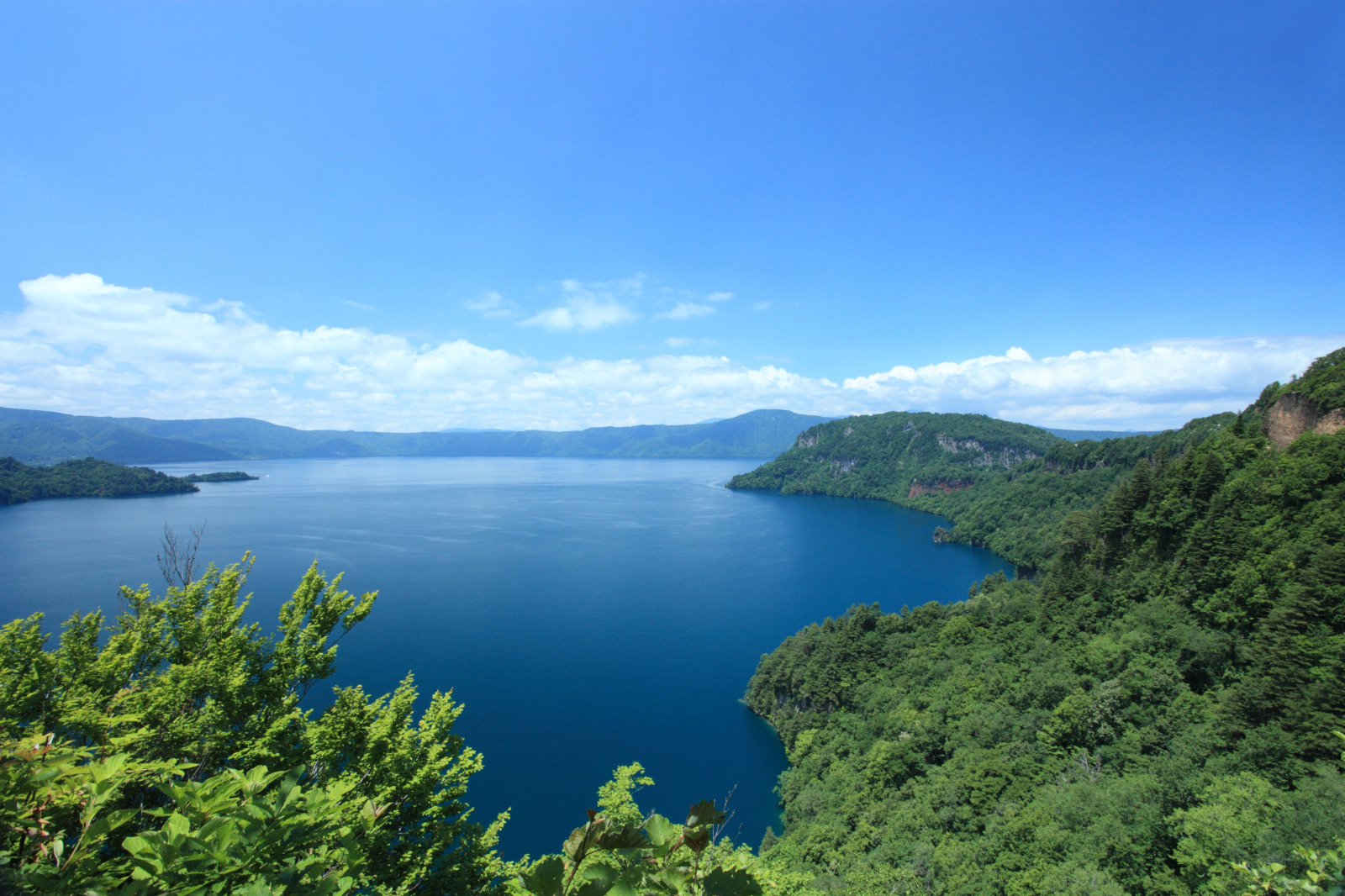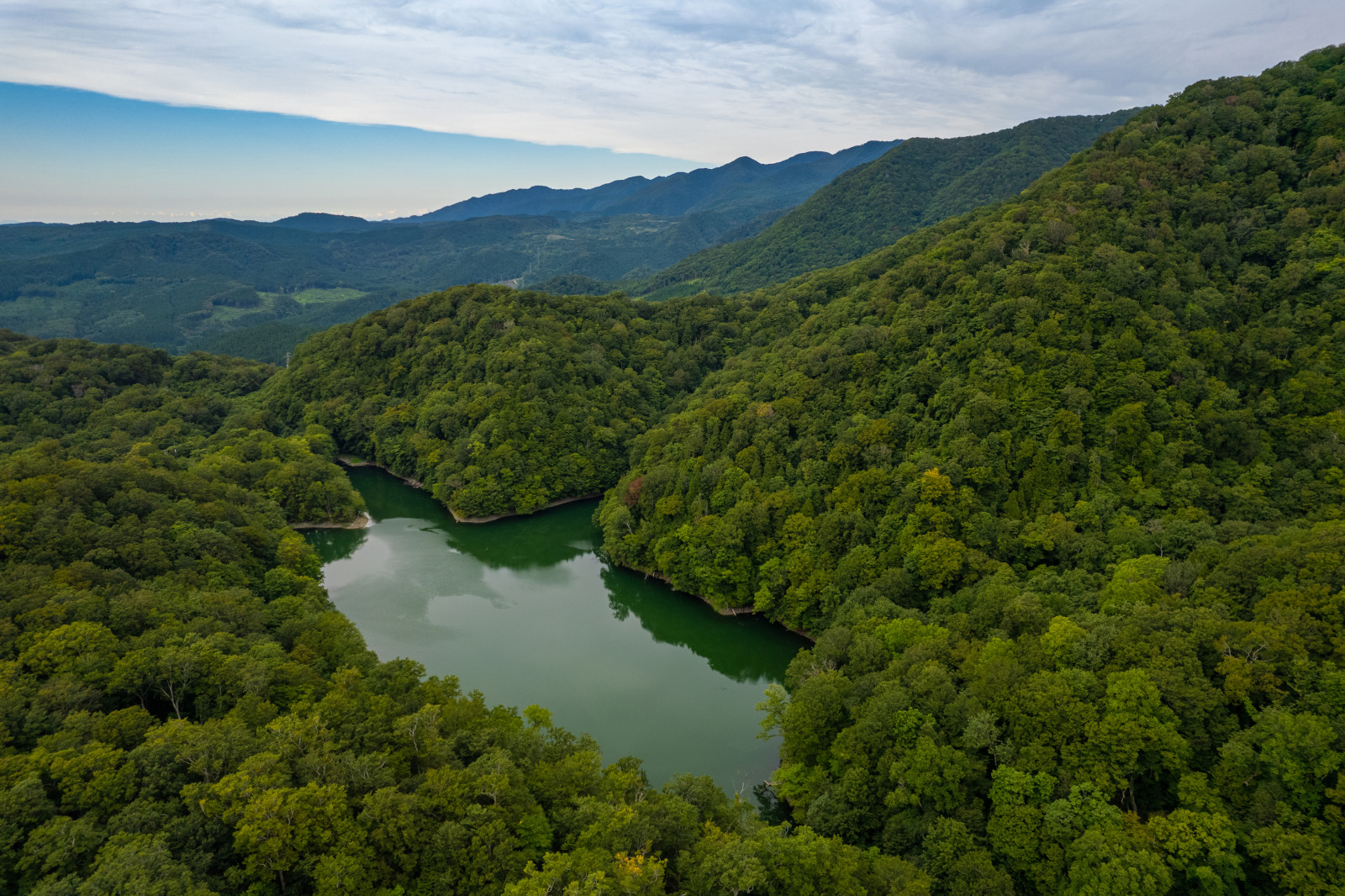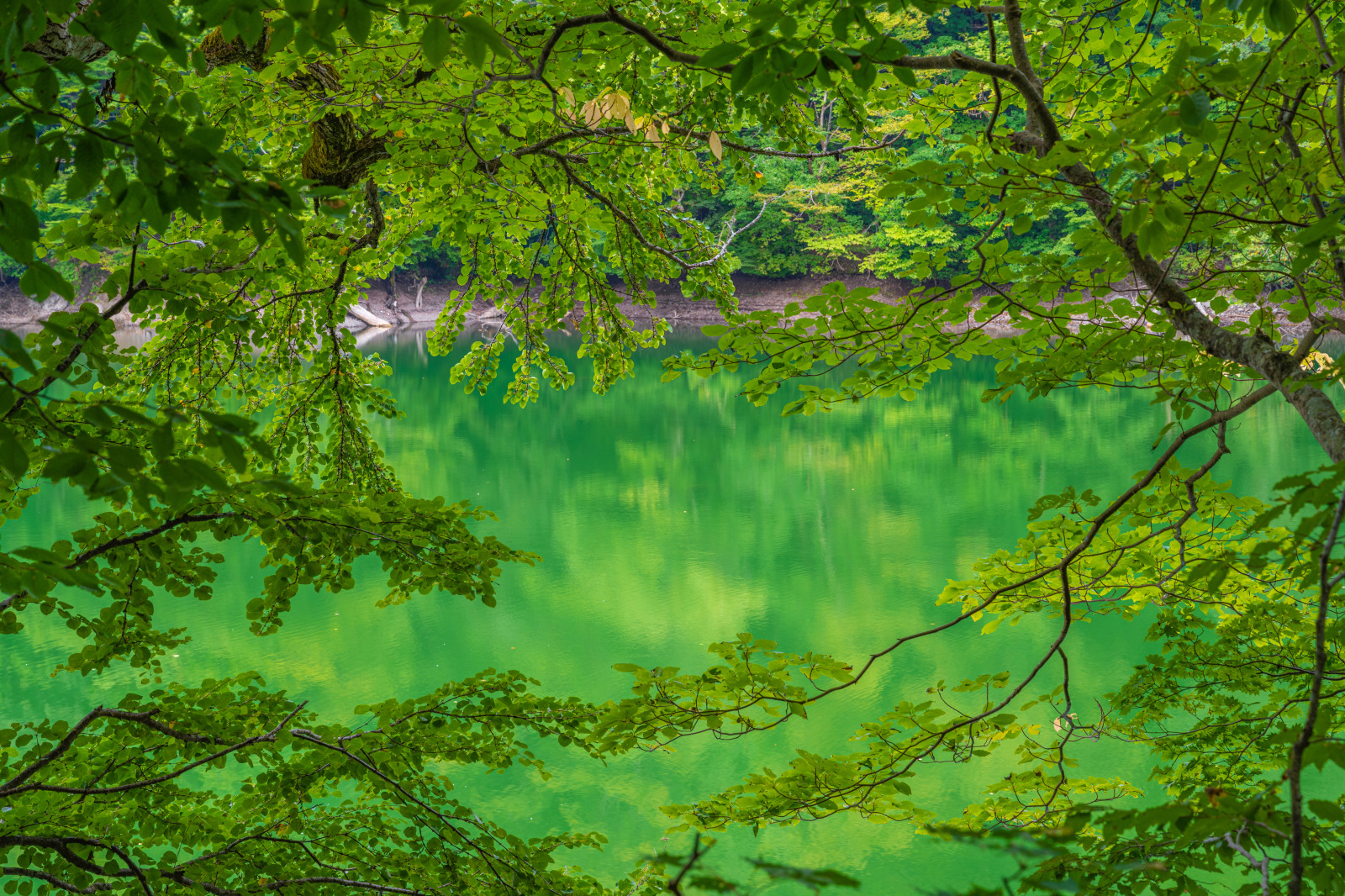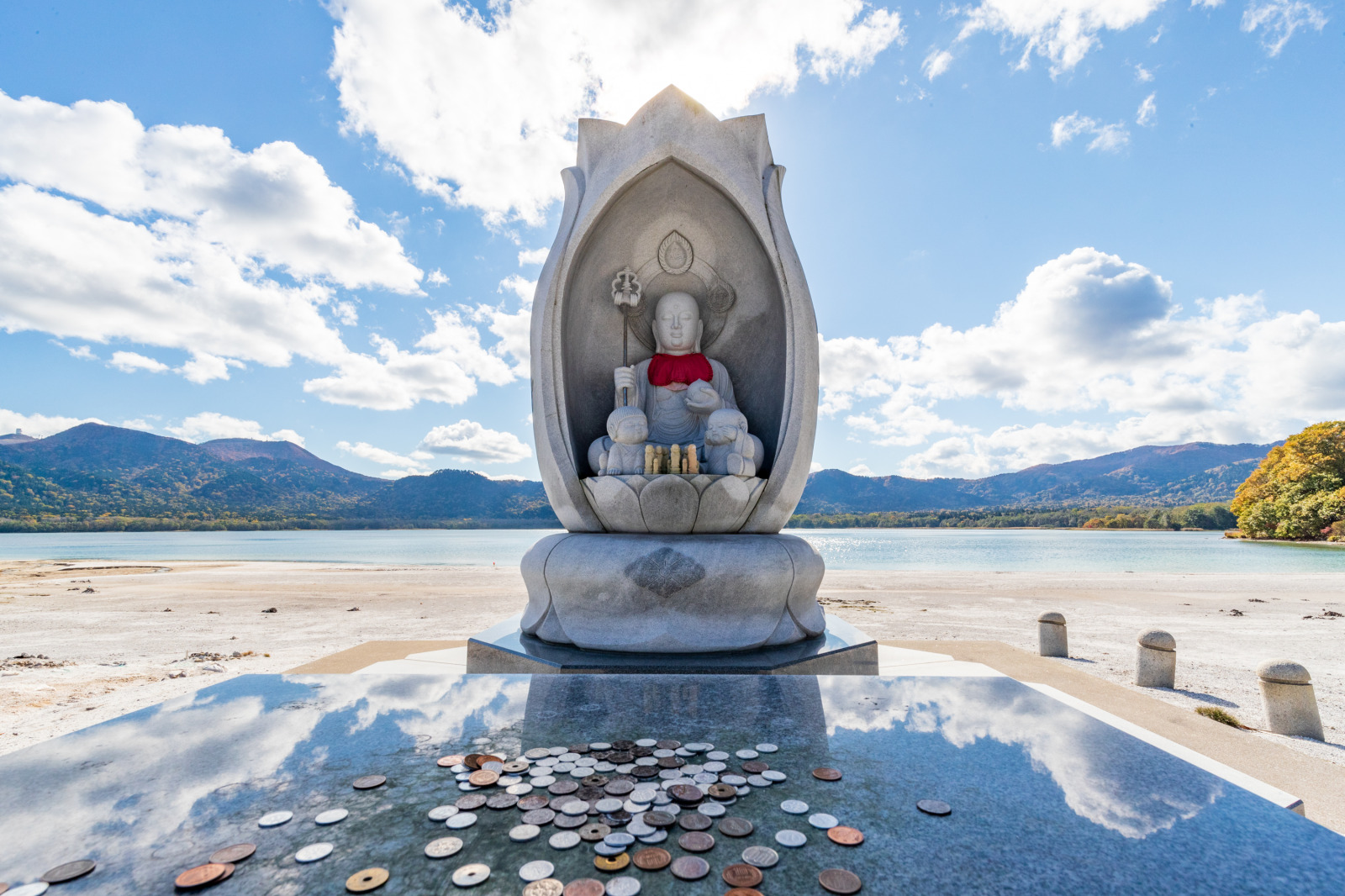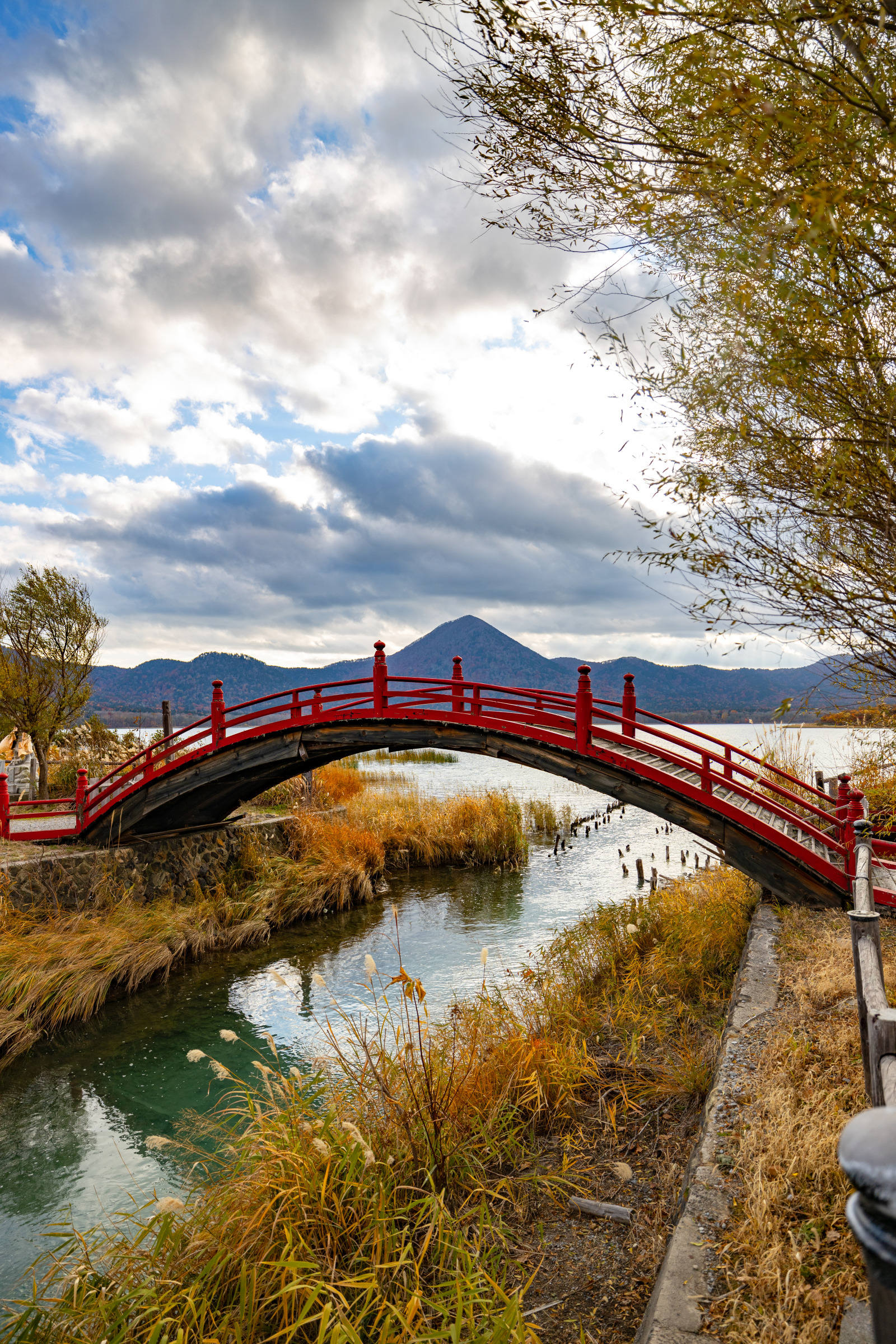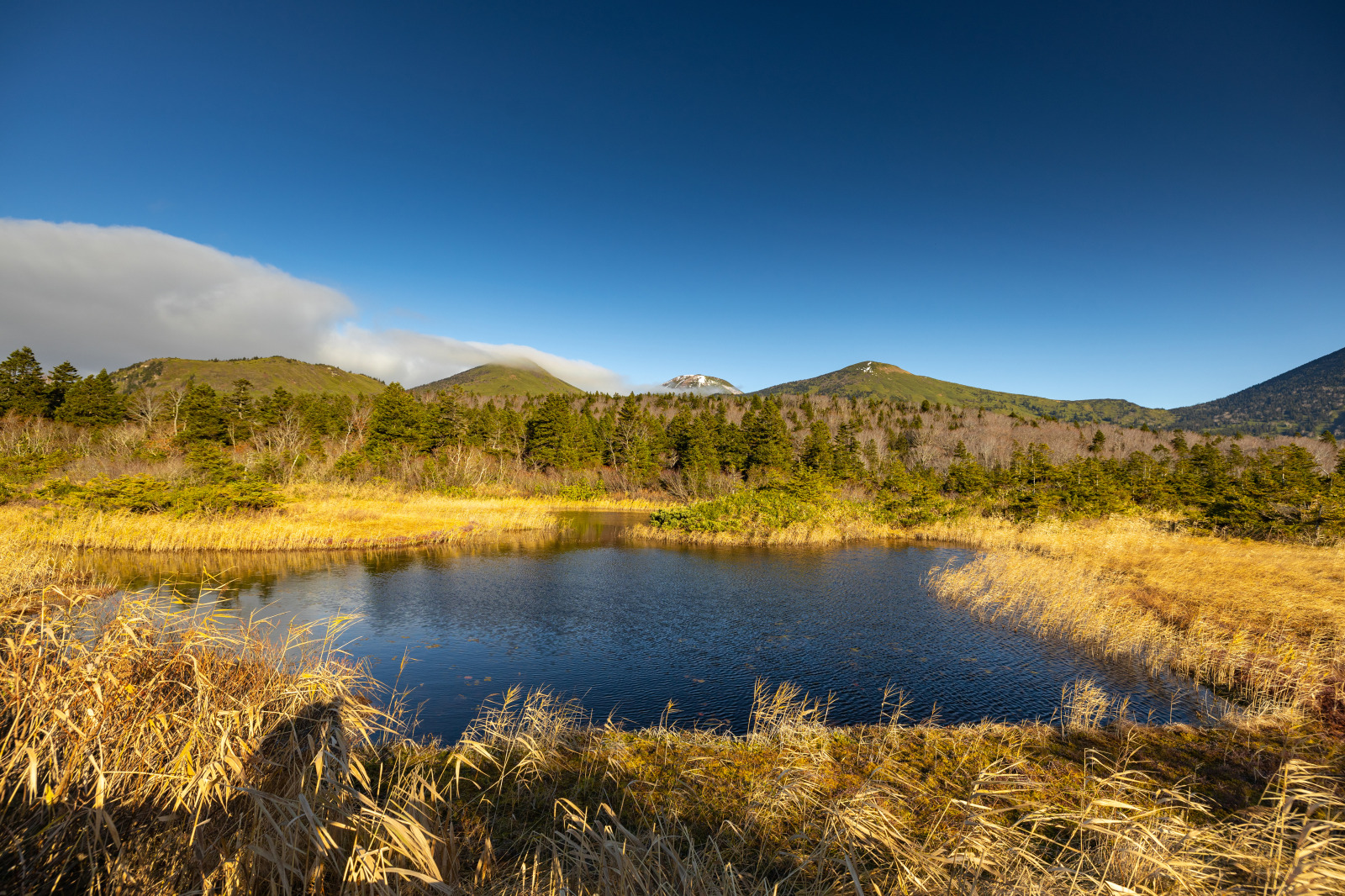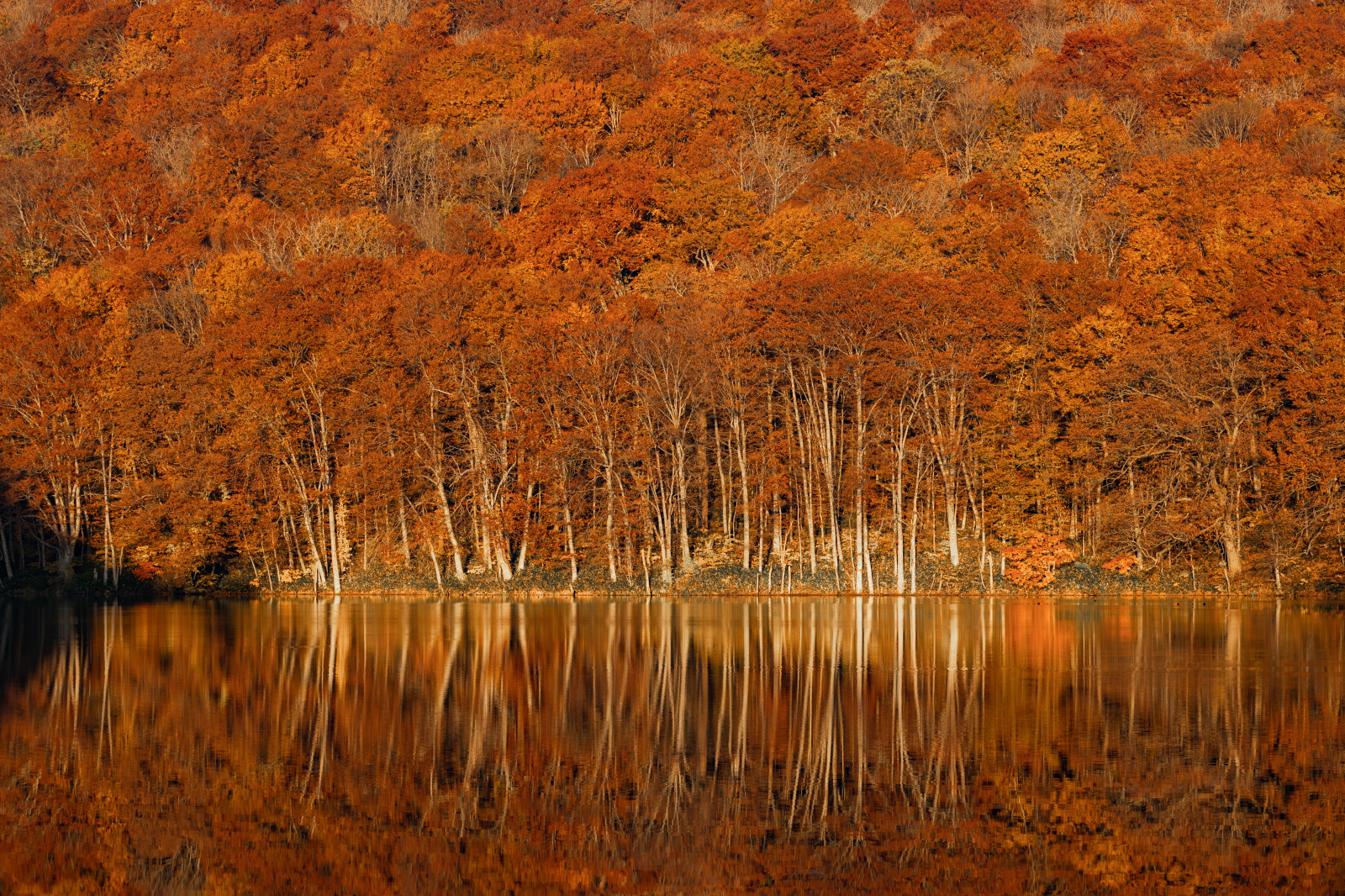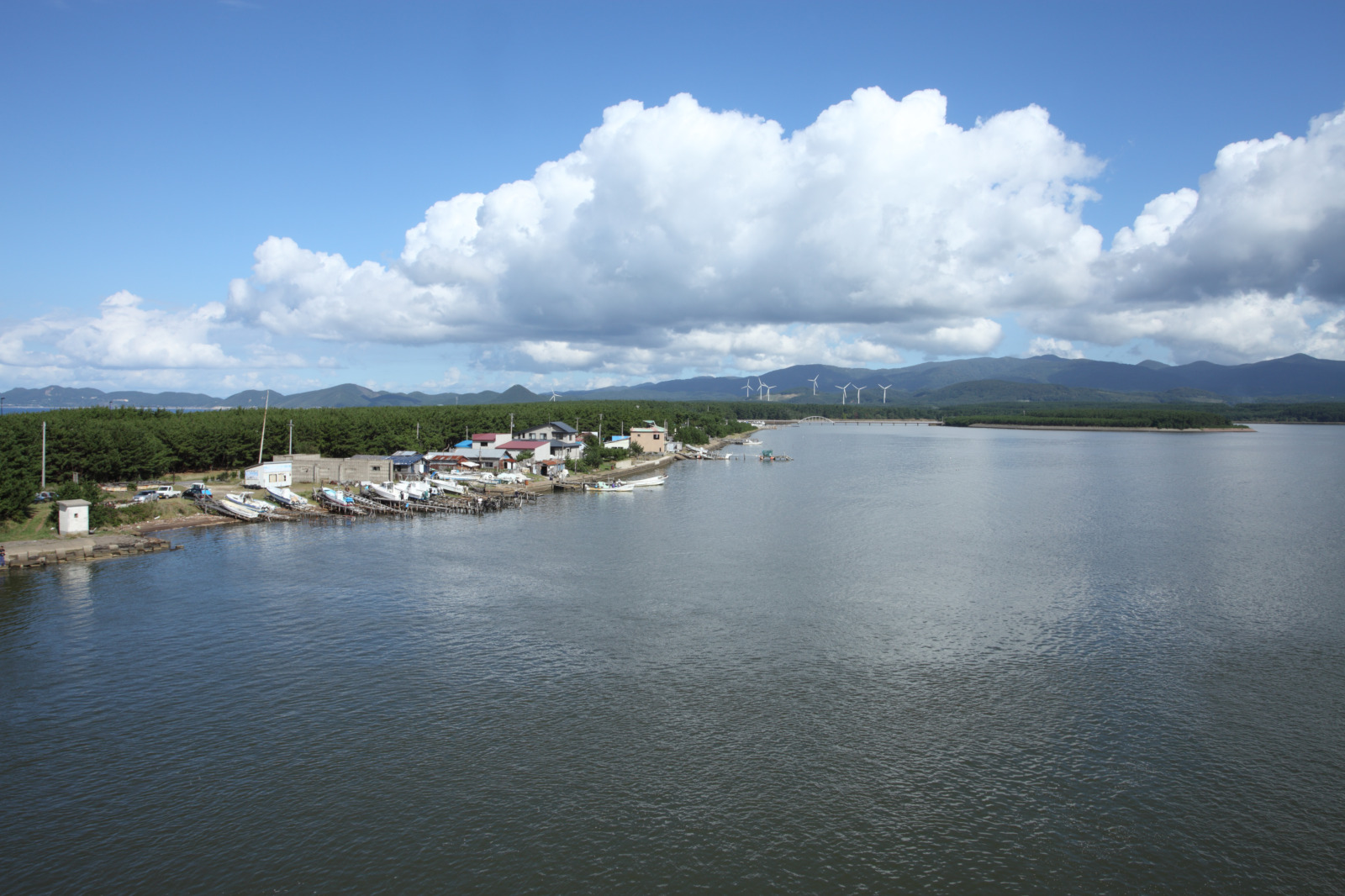Be amazed by Aomori’s natural splendor reflected in the prefecture’s most stunning lakes and ponds
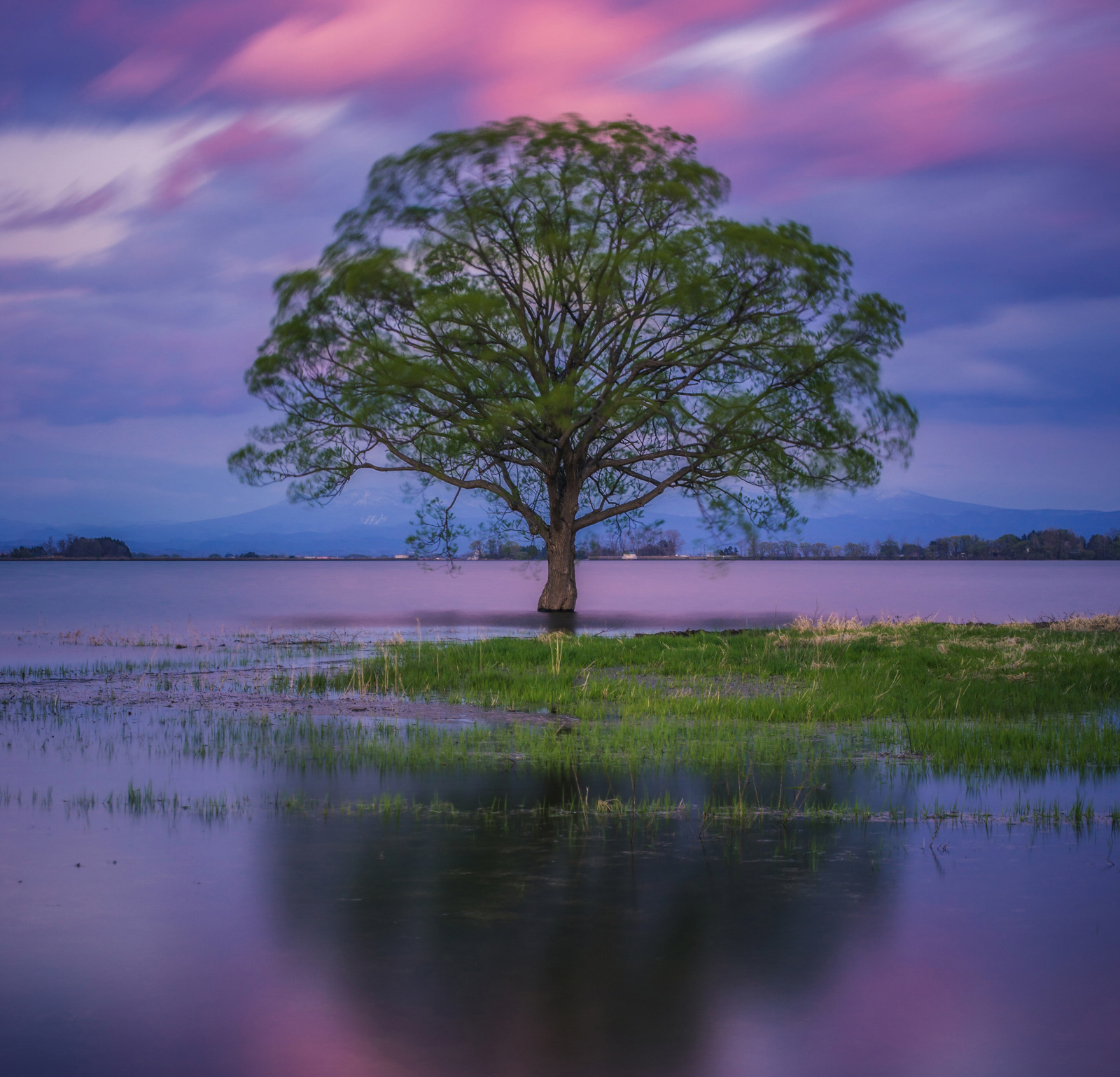
Aomori can be described as a prefecture of mountains, forests, and water. Dispersed throughout the prefecture are beautiful bodies of water such as lakes and ponds that draw visitors with their picture-perfect scenery. Professional and amateur photographers alike will find much to love at these highly photogenic lakes and ponds.
Lake Towada
Straddling the border of Aomori and Akita prefectures, this crater lake is the largest on Japan’s main island of Honshu. Its incredible depth is responsible for its intense blue color. A ride on an excursion boat is one popular way to enjoy the lake’s stunning scenery, especially in the fall, when the surrounding mountains decked out in colorful fall foliage created a breathtaking vista in combination with the lake's deep blue waters, occasionally dotted with rocky islands. The scenery of the lake is constantly transforming with the movement of the clouds and the changing light, an ephemeral beauty that is never quite the same from one moment to the next.
Juniko Lakes and Aoike Pond
Juniko is the collective name for numerous small lakes and ponds set among the old-growth beech forests of the Shirakami Sanchi region, a UNESCO-designated natural World Heritage Site. The most famous among these bodies of water is probably the mysteriously blue Aoike Pond. Although the source of the pond’s vivid color remains unknown, it is thought to be entirely natural in origin, and the surrounding lush greenery forms a vibrant contrast with its translucent hue of blue.
Lake Usori
Mount Osorezan on the Shimokita Peninsula is one of the most spiritual spots in Japan, considered to be a place linking the world of the living with the next world due to its resemblance to descriptions of the Buddhist afterlife. Its natural features are said to embody both heaven and hell. With crystalline blue water and a sandy white beach, this caldera lake represents “heaven,” forming a stark contrast with the “hell” of desolate volcanic rocks and sulfurous fumes nearby. Perhaps you, too, will see the entrance to another world reflected in its waters.
Tsuta Numa and Suiren Numa Ponds
These ponds in the Hakkoda Mountains present stunning scenery throughout the changing seasons. Suiren Numa Pond* is located amid a marshland with beautifully blooming water lilies, while Tsuta Numa Pond is surrounded by a deep virgin beech forest. In fall, the Hakkoda Mountains create a rich tapestry of colorful foliage that is reflected on the surfaces of the ponds. Note that Tsuta Numa Pond in particular sees large numbers of visitors during the peak fall leaf season (generally mid- to late October), so a booking and fee system has been introduced to control crowding. Details can be found here. In addition, visitors are requested to take measures to reduce traffic congestion and protect the natural environment, such as avoiding parking on the road or going off the path and trampling vegetation.
*Access to Suiren Numa Pond is currently restricted due to Asian black bear sightings. Please check the latest information about bear alerts and restricted areas before visiting.
Lake Tsugaru Fujimi
This lake in Tsuruta Town is famously spanned by Tsuru-no-Mai Bridge, the longest wooden bridge in Japan. The bridge is a total of about 300 meters in length and is made entirely of cypress wood from Aomori Prefecture using traditional construction techniques. With the majestic Mount Iwaki towering in the background and also reflected in the lake’s waters, the mountain, lake, and bridge come together in perfect harmony to form a spectacular vista born from nature’s beauty as well as human technical innovation.
*The bridge will be closed for the following periods due to repair work:
September 1, 2024, to March 31, 2025
September 1, 2025, to March 31, 2026
Lake Jusanko
The name of this lake, the third largest in Aomori Prefecture, literally translates to “Lake Thirteen” in Japanese, allegedly due to the fact that thirteen different rivers flow into it. Located along the Sea of Japan coast in the northwestern part of the Tsugaru Peninsula, it is a brackish-water lake mixing seawater and freshwater. This has resulted in the formation of a unique ecosystem that includes Japanese basket clams, a local delicacy. The lake is also a destination for migratory swans as well as a habitat for many rare bird species, making it an excellent spot for birdwatching.
These are just a few of Aomori’s most picturesque lakes and ponds that present stunning scenery throughout the four seasons. It’s only by visiting in person that you can experience just how subtly the reflections in their waters shift from moment to moment with changes in the light and clouds, a testament to the ephemeral and yet eternally captivating beauty of the natural world.
